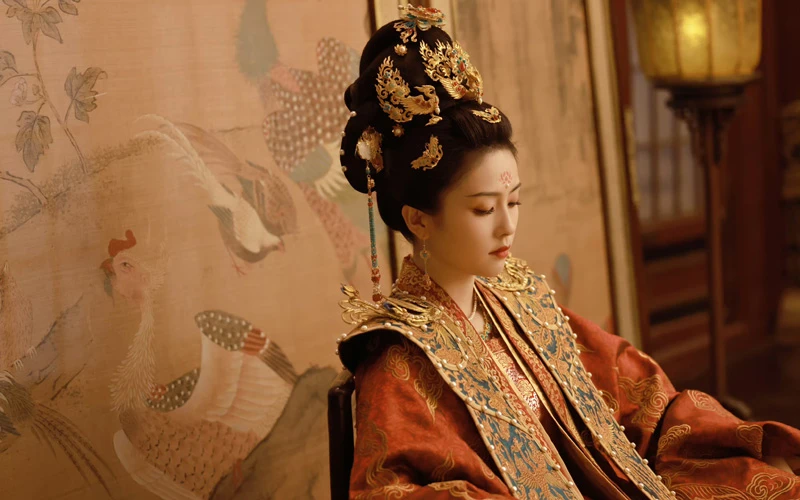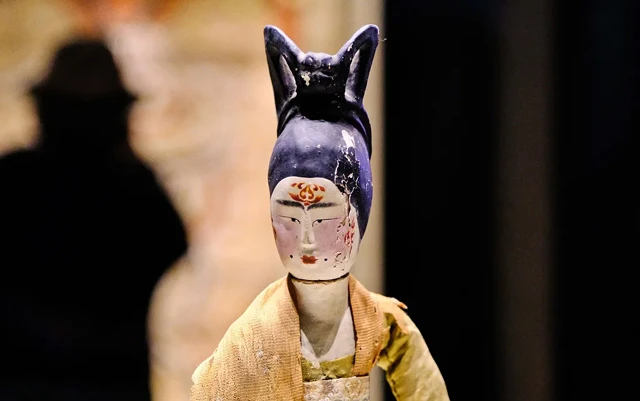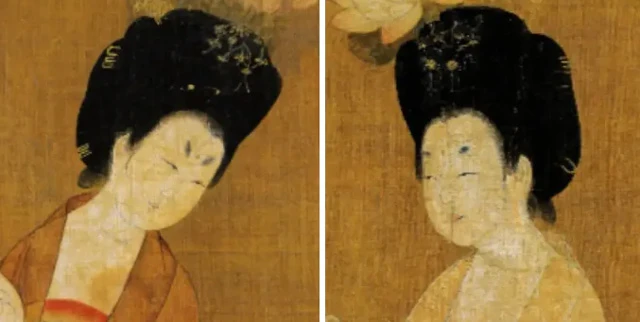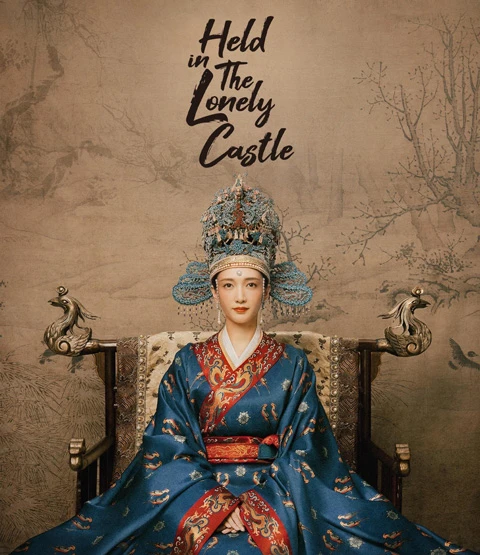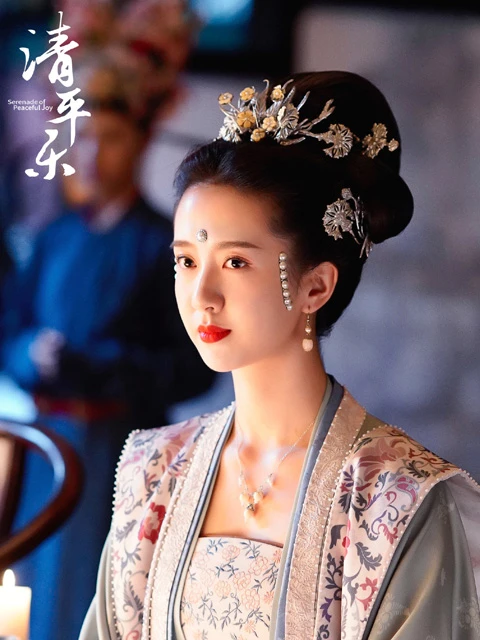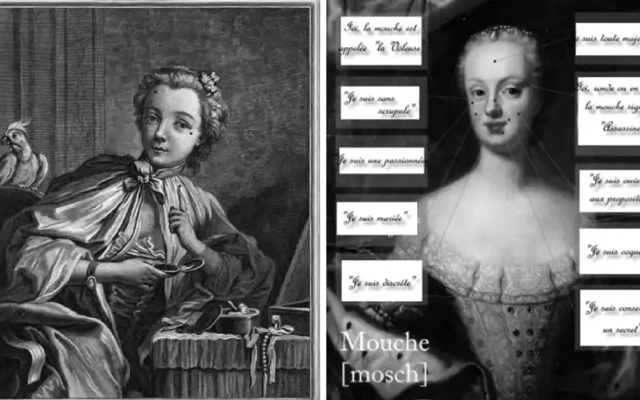The recent short drama "Fortune Writer" has gained popularity, with its exquisite costume and constantly twisting plot captivating many netizens. Seizing this momentum, many people have revisited acclaimed short dramas such as "A Familiar Stranger" and "The Killer Is Also Romantic," only to discover a commonality in the art direction - almost all female characters are adorned with Huadian makeup.
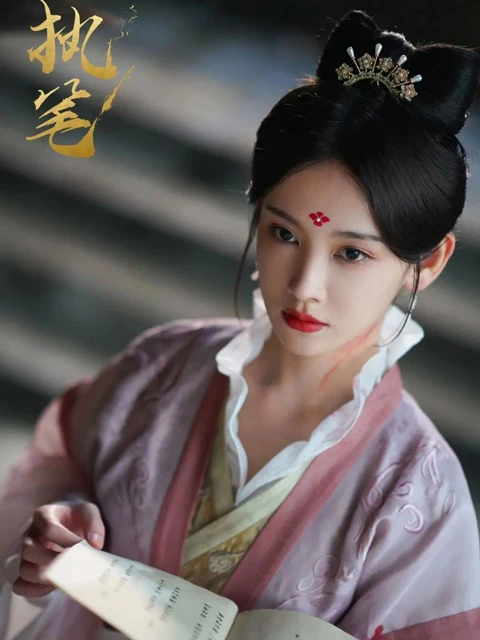
Not only in short dramas, but also in large-scale costume dramas, there seems to be a strong preference for Huadian makeup, as seen in productions like "Story of Kunning Palace," "A Journey to Love," and "Yong An Dream." The prevalence of Huadian makeup seems to set a unified aesthetic trend in historical costume dramas. Why do period dramas favor the use of Huadian makeup? And why are these Huadian often red in color?
Huadian: The Creative Aesthetics of Ancient China
The beautiful Huadian makeup actually dates back to the Spring and Autumn Period and the Warring States Period in ancient China. Professor Cao Lifen from Liaoning Normal University's School of Literature once mentioned that on the faces of painted female figurines unearthed from Chu tombs in Changsha during the Warring States period, there were three rows of circular dots arranged in a trapezoid shape, while circular dots were also found above the eyelids of wooden figurines unearthed from Chu tombs in Xinyang, Henan. These can be considered as early forms of Huadian. The peak of Huadian makeup was reached during the Tang Dynasty. The popularity of this style of makeup can be gleaned from the makeup of Tang Dynasty female figurines unearthed.
As for the reason behind the popularity of Huadian makeup during the Tang Dynasty, it seems to be related to Lady Shangguan Wan'er. This notion stems from a passage in Duan Chengshi's "Miscellaneous Morsels from Youyang," which states: "Today, women adorn their faces with Huadian patterns, a trend that originated from Lady Shangguan Zhaorong, intended to conceal scars." The specific story behind this "concealing of scars" has been embellished through various oral traditions over time, with many versions circulating to this day. One version suggests that during a court coup, Empress Wu Zetian suspected Lady Shangguan Wan'er's involvement and, in her anger, ordered her to be scarred on the face. However, after Lady Shangguan Wan'er defended herself, Empress Wu Zetian believed in her innocence but could not revoke the decree already issued, so she substituted the scar with a vermilion mark on her forehead during the execution.
The vermilion mark, combined with Lady Shangguan Wan'er's exquisite beauty, ironically turned into a form of adornment, prompting women inside and outside the palace to imitate her, thus leading to its popularity. While there are many versions of the story, they all illustrate that people at that time adopted Huadian makeup out of a pursuit of beauty.
Despite the varying styles of Huadian makeup, the color of Huadian in period dramas tends to be quite uniform: apart from the use of colorful Huadian patterns in fantasy dramas to complement the images of immortals and demons, the Huadian in historical idol dramas are predominantly red, perhaps due to red being more universally flattering and matching well with red lip makeup.
Looking beyond the Huadian makeup in period dramas, in reality, historical Huadian were not limited to red; green and yellow Huadian were also widely used. Green Huadian, also known as "Cui Dian, green adornments," were mentioned by many poets. Yellow Huadian frequently appeared in the painting "Court Ladies Adorning Their Hair with Flowers" as well. Moreover, compared to the Huadian directly painted on the forehead in most period dramas, the materials used for Huadian in ancient times were quite diverse. They could be directly painted on, made of gold foil, paper, fish bones, flowers, plants, and even dragonfly wings.
During the Song Dynasty, it was fashionable for the royal family to adorn themselves with pearl, known as pearl Huadian. The period drama "Serenade of Peaceful Joy" authentically recreated this makeup style. The creation of these Huadian with varying materials was not excessively intricate.
Typically, when making Huadian with special materials like gold foil, the materials are cut into shape and then affixed to the forehead. A type of adhesive called "He Jiao" was used to stick the Huadian. This glue earned its name because it would become sticky with just a breath of air towards it.
If you observe closely, you may notice that many modern film and television dramas as well as traditional Han and Tang makeup styles still incorporate the red dot at the center of the eyebrows makeup. For instance, Yang Mi sported this style in "Eternal Love," adding a touch of charm and agility to the look, though simple. Therefore, do not underestimate this small Huadian, as it can sometimes be the finishing touch to a makeup look.
Huadian Makeup in the World
Apart from China's traditional Huadian where makeup is applied on the face, India and France also have similar decorations. However, unlike the diverse decorative purposes of Chinese Huadian, Indian and French Huadian differ slightly in form and significance. India is known to favor applying makeup at the center of the eyebrows, and this custom has been preserved to this day. They do not have as many decorative patterns as China, usually simply applying a red dot, known as "bindi" in the Indian language.
The red dot at the center of Indian women's foreheads holds dual meanings. On one hand, ancient Indian yogis believed that the center of the forehead is the source of one's life force and must be protected by applying a mark, with many seeking protection from disasters and evil by applying a mark at the center of the forehead. On the other hand, the red mark is a symbol of marriage for Indian women. On the day of a young couple's marriage, the husband personally applies a red mark at the center of the wife's forehead using vermilion powder; the wife continues to apply it herself every day while the husband is alive. As such, the red mark on a married woman's forehead is considered a symbol of auspiciousness and good fortune, also known as the "auspicious mark."
The traditional material used for the auspicious mark is a paste made by crushing vermilion, rice, rose petals, and other materials. Nowadays, Indian women mostly use pre-made stick-on auspicious marks available in the market, making it convenient and offering a variety of colors and shapes to match different clothing and jewelry, enhancing aesthetics. Nowadays, applying the red mark is not limited to married women; even unmarried women and children can apply it.
In ancient France, the trend was to apply "beauty marks" (mouches). Similar to Chinese Huadian, these marks were cut from materials and applied on the face or body. Initially used to cover blemishes on the face or body, they later evolved into a means of enhancing makeup and attracting attention from the opposite sex. The main material used for beauty marks transitioned from taffeta to velvet, with shapes popularizing such as crescent moons and animal forms similar to Huadian.
In terms of application, France was more daring. For the French, the primary function of beauty marks was to draw attention from the opposite sex to the body. Hence, they often placed beauty marks on the neck, chest.
Compared to today's pursuit of clean facial appearances and the removal of moles, people in ancient times greatly favored Huadian makeup. Say that trends are cyclical; could the traditions of Huadian and beauty marks make a comeback in modern makeup styles one day?
